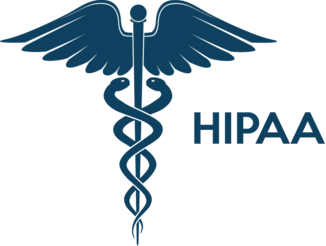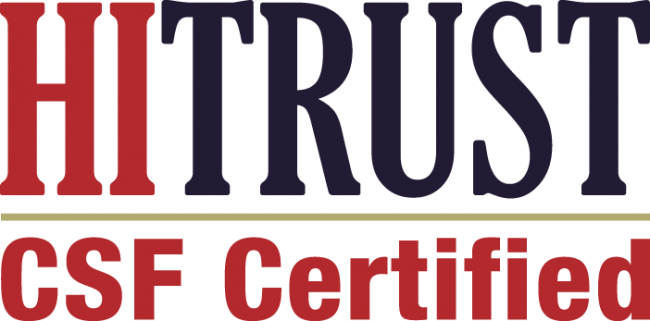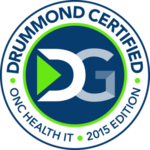The healthcare industry stands at a pivotal crossroads, transitioning from traditional fee-for-service models that prioritize volume to value-based care (VBC) models that emphasize outcomes, quality, and cost-effectiveness. At the heart of this transformation lies an often-overlooked but critical component: referral management. Modern referral management platforms are emerging as essential enablers of value-based care, helping healthcare providers streamline care coordination, reduce costs, and improve patient outcomes.
The Value-Based Care Revolution
Value-based care represents a fundamental shift in healthcare delivery philosophy. Instead of rewarding providers for the quantity of services rendered, VBC models compensate them based on the quality of care and patient outcomes achieved. This approach creates powerful incentives for healthcare organizations to focus on preventive care, care coordination, and long-term patient health rather than episodic treatment.
The momentum behind value-based care has been steadily building. The referral management market size was valued at USD 4.17 billion in 2023 and is projected to reach USD 13.48 billion by 2031, growing at a CAGR of 15.8% from 2024 to 2031. This explosive growth reflects healthcare organizations’ recognition that effective referral management is crucial for success in value-based care models.
Value-based programs reward health care providers with incentive payments for the quality of care they give to people with Medicare. These programs are part of CMS’s larger quality strategy to reform healthcare delivery and payment systems, creating a three-part aim of better care, healthier populations, and lower costs.
The Referral Management Challenge in Traditional Healthcare
Traditional referral processes have long been plagued by inefficiencies that directly contradict value-based care principles. Any health system will have an average referral leakage of 55-65%, with approximately 33% of patients not following up with the specialist to whom they are referred. Additionally, 25-50% of referring physicians do not receive feedback on their referrals, creating communication gaps that compromise care coordination.
These statistics reveal a broken system where:
- Patients fall through the cracks due to poor care coordination
- Providers lack visibility into referral outcomes
- Administrative costs escalate due to manual processes
- Revenue opportunities are lost through referral leakage
- Patient satisfaction suffers from delayed or missed care
In a fee-for-service environment, these inefficiencies might be tolerated as necessary costs of doing business. However, in value-based care models where providers are accountable for patient outcomes and total cost of care, such inefficiencies become existential threats to financial sustainability.
How Modern Referral Management Enables Value-Based Care
Modern referral management platforms like HealthViewX are transforming how healthcare organizations approach care coordination, making value-based care models not just feasible but profitable. These platforms address the core challenges that have historically hindered effective care coordination.
1. Eliminating Referral Leakage and Revenue Loss
Advanced referral management systems provide end-to-end visibility and tracking capabilities that virtually eliminate referral leakage. Organizations using comprehensive referral management platforms have achieved a 40% reduction in referral/revenue leakage and a 90% reduction in incomplete referrals. This dramatic improvement in referral completion rates ensures that patients receive the care they need while protecting provider revenue streams.
For value-based care organizations, this translates to better patient outcomes and reduced total cost of care. When patients complete their referrals and receive appropriate specialist care, conditions are more likely to be managed effectively before they require expensive emergency interventions.
2. Streamlining Care Coordination
Modern platforms dramatically reduce the administrative burden associated with referral management. A large university experienced a 67% reduction in referral processing time, while an FQHC experienced a 45% increase in the number of referral loop closures. These improvements in operational efficiency free up clinical staff to focus on direct patient care activities that drive value-based care success.
The automation capabilities of modern referral management systems eliminate many of the manual tasks that traditionally consumed significant staff time. Automated referral routing, status tracking, and communication reduce the likelihood of errors while ensuring that all stakeholders remain informed throughout the referral process.
3. Improving Patient Experience and Engagement
Patient experience is a critical component of value-based care models, directly impacting quality scores and financial performance. Modern referral management platforms significantly enhance the patient experience by eliminating communication gaps and reducing wait times. Organizations report a 30% reduction in phone calls from patients and a 35% increase in referral loop closures, indicating improved communication and care coordination.
When patients have visibility into their referral status and receive proactive communication about appointments and care plans, they become more engaged partners in their healthcare journey. This engagement is crucial for achieving the behavioral changes and care adherence necessary for positive outcomes in value-based care models.
4. Enabling Data-Driven Decision Making
Value-based care requires sophisticated analytics capabilities to track outcomes, identify improvement opportunities, and demonstrate value to payers. Modern referral management platforms provide comprehensive reporting and analytics that support these requirements. Healthcare organizations can track key performance indicators such as referral completion rates, time to specialist appointments, patient satisfaction scores, and clinical outcomes.
This data-driven approach enables continuous improvement in care processes and helps organizations optimize their referral networks to achieve better outcomes at lower costs. For accountable care organizations (ACOs) and other value-based care entities, this analytical capability is essential for managing population health and demonstrating value to payers.
Quantifiable Impact on Value-Based Care Outcomes
The transition to modern referral management platforms produces measurable improvements that directly support value-based care success. Recent studies demonstrate the significant impact of well-managed referral processes on key value-based care metrics.
Quality Outcomes
Value-based care models have been associated with a 4.6% reduction in 30-day hospital readmission rates, contributing to improved patient outcomes. A study found that accountable care organizations (ACOs) achieved a 9% improvement in patient experience scores. These improvements in quality metrics directly translate to better performance in value-based care programs and increased incentive payments.
Effective referral management contributes to these outcomes by ensuring that patients receive appropriate specialist care before their conditions deteriorate to the point of requiring hospitalization. The coordinated care approach facilitated by modern referral management platforms helps identify and address potential complications early in the care process.
Cost Efficiency
Providers are rewarded based on quality and outcomes, reducing low-value care and controlling costs by eliminating wasteful spending. Early detection and prevention of diseases through value-based care can result in long-term cost savings and improved population health. Modern referral management platforms support these cost reduction goals by eliminating administrative waste and ensuring that patients receive the right care at the right time.
The administrative efficiencies achieved through automated referral processes translate to significant cost savings. When referral processing time is reduced by 67% and incomplete referrals are reduced by 90%, organizations can reallocate resources from administrative tasks to value-added clinical activities.
Population Health Management
Value-based care models prioritize preventative measures and population health management, which can lead to improved overall health outcomes and cost savings in the long run. Modern referral management platforms support population health initiatives by providing visibility into referral patterns and outcomes across entire patient populations.
This population-level view enables healthcare organizations to identify trends, manage high-risk patient cohorts more effectively, and ensure that preventive care recommendations are followed through with appropriate specialist consultations.
The HealthViewX Advantage in Value-Based Care
HealthViewX has emerged as a leader in referral management solutions specifically designed to support value-based care initiatives. The platform’s comprehensive approach addresses the full spectrum of referral management challenges while providing the analytics and reporting capabilities essential for value-based care success.
Key Features Supporting Value-Based Care
The HealthViewX platform offers several features that directly support value-based care objectives:
Automated Workflow Management: The platform automates referral routing, approval processes, and status updates, reducing administrative burden and eliminating manual errors that could compromise care coordination.
Real-Time Tracking and Analytics: Comprehensive dashboards provide real-time visibility into referral status, completion rates, and outcomes, enabling proactive management of care coordination processes.
Patient Engagement Tools: Integrated communication tools keep patients informed throughout the referral process, improving engagement and care plan adherence.
Outcome Measurement: The platform tracks clinical outcomes and quality metrics, providing the data necessary to demonstrate value in value-based care contracts.
Implementation Success Stories
Healthcare organizations implementing HealthViewX have achieved remarkable results that directly support value-based care success. A large university in Chicago experienced a 45% reduction in referral processing time, demonstrating the platform’s ability to streamline care coordination processes.
These efficiency gains translate to improved patient satisfaction, reduced administrative costs, and better clinical outcomes, all critical success factors for value-based care models. The platform’s ability to reduce referral leakage and improve loop closure rates ensures that patients receive the care they need while protecting provider revenue streams.
Overcoming Implementation Challenges
While the benefits of modern referral management platforms are clear, healthcare organizations often face challenges when implementing these systems. Successful implementation requires careful planning, stakeholder engagement, and change management strategies.
Technology Integration
Modern referral management platforms must integrate seamlessly with existing electronic health record (EHR) systems and other healthcare IT infrastructure. HealthViewX and similar platforms offer robust integration capabilities that minimize disruption to existing workflows while maximizing the benefits of automated referral management.
Workflow Redesign
Implementing modern referral management requires organizations to examine and potentially redesign their existing referral processes. This presents an opportunity to eliminate inefficiencies and optimize workflows for value-based care success. Training and change management programs are essential to ensure that clinical and administrative staff can effectively utilize new capabilities.
Performance Measurement
Value-based care success requires sophisticated performance measurement capabilities. Organizations must establish baseline metrics, define improvement targets, and implement regular monitoring processes to track progress toward value-based care objectives.
Strategic Recommendations for Healthcare Organizations
Healthcare organizations seeking to leverage referral management platforms for value-based care success should consider the following strategic recommendations:
1. Assess Current State Performance
Conduct a comprehensive assessment of current referral management processes, identifying key performance metrics such as referral completion rates, processing times, and patient satisfaction scores. This baseline assessment will provide the foundation for measuring improvement after platform implementation.
2. Align Platform Selection with Value-Based Care Goals
Select referral management platforms that offer features specifically designed to support value-based care objectives. Look for platforms that provide comprehensive analytics, outcome measurement capabilities, and integration with quality reporting systems.
3. Develop Implementation Roadmap
Create a detailed implementation roadmap that addresses technology integration, workflow redesign, training requirements, and performance measurement. Ensure that the implementation plan aligns with broader value-based care initiatives and organizational strategic objectives.
4. Establish Performance Monitoring
Implement robust performance monitoring processes that track key metrics related to referral management effectiveness and value-based care success. Regular monitoring enables continuous improvement and demonstrates value to organizational stakeholders.
5. Foster Stakeholder Engagement
Engage all stakeholders, including referring physicians, specialists, administrative staff, and patients, in the implementation process. Their buy-in and active participation are essential for realizing the full benefits of modern referral management platforms.
Conclusion
The transition from volume-based to value-based care represents one of the most significant transformations in healthcare delivery. Success in this new paradigm requires healthcare organizations to fundamentally reimagine how they coordinate care, measure outcomes, and engage patients. Modern referral management platforms like HealthViewX are proving to be essential enablers of this transformation, providing the tools and capabilities necessary to achieve the quality outcomes and cost efficiencies that value-based care models demand.
The evidence is compelling: organizations that implement comprehensive referral management solutions achieve significant improvements in operational efficiency, patient satisfaction, and clinical outcomes. With value-based care models demonstrating a 4.6% reduction in 30-day hospital readmission rates and ACOs achieving 9% improvements in patient experience scores, the business case for investing in modern referral management platforms is clear.
As the healthcare industry continues its evolution toward value-based care, referral management will become increasingly critical to organizational success. Healthcare leaders who recognize this opportunity and invest in modern referral management capabilities will be best positioned to thrive in the value-based care era, delivering better outcomes for patients while achieving sustainable financial performance.
The future of healthcare is value-based, and the foundation of that future is built on effective care coordination enabled by modern referral management platforms. Organizations that embrace this reality today will be the healthcare leaders of tomorrow.






